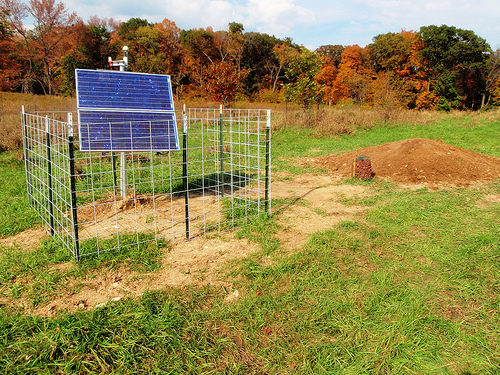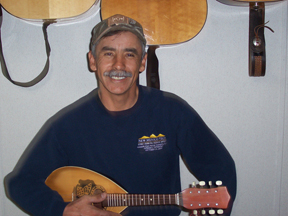L44A
Ryerson Woods, Lake Cnty Forest Preserve, IL, USA
The USArray component of the NSF-funded EarthScope project ended its observational period in September 2021 and all remaining close-out tasks concluded in March 2022. Hundreds of seismic stations were transferred to other operators and continue to collect scientific observations. This USArray.org website is now in an archival state and will no longer be updated. To learn more about this project and the science it continues to enable, please view publications here: http://usarray.org/researchers/pubs and citations of the Transportable Array network DOI 10.7914/SN/TA.
To further advance geophysics support for the geophysics community, UNAVCO and IRIS are merging. The merged organization will be called EarthScope Consortium. As our science becomes more convergent, there is benefit to examining how we can support research and education as a single organization to conduct and advance cutting-edge geophysics. See our Joining Forces website for more information. The site earthscope.org will soon host the new EarthScope Consortium website.




Tony Gonzales has been a Lead Construction Engineer for the Transportable Array since 2007. We caught up with him via email to ask about his job coordinating site construction with landowners and handling the logistics of getting crews and equipment to remote sites 70 kilometers apart every day.
 What is your favorite part about your job?
What is your favorite part about your job?My favorite part of the job is the challenges I face on a daily basis. I also enjoy working as part of the IRIS team. This is a great project and I am proud to be part of it. One day, my grandchildren will be reading about this project in their history/science books and I will be able to show them pictures while telling them stories of all the wonderful sites and people who I have encountered along the way.
What is a typical day like for me? To be honest, there are no two days alike. The routine is usually waking up, having breakfast and looking over my recon report to plan for the day. Once we leave the parking lot, nothing is typical. I "play my hands as the cards are dealt" and make decisions the best way I know how in any given situation. I usually follow my instinct and majority of the time, everything works out. George [Patton, the late Senior Field Engineer at the Transportable Array Coordinating Office] always said, "keep constructing and everything else will fall into place".
An example of one of my most challenging days would be when we were working in Cuba, NM and the outside temperature was -3 degrees. All the water in town was frozen except the nozzles at the carwash. In the few days we were there, I scouted a couple of sites early because I had a feeling they were going to be rough. The first site I checked on, I barely got in and out because of snow and mud. I made the call to skip the first sit. The next site I proceeded to, the landowner permitted us to enter. As I made it to the stake in the ground, I began to have trouble in the snow and as I started to leave, I got stuck down to the frame on my truck. No cell/satellite service was available, so I started to dig. Two hours later, I was still stuck, wet, cold and muddy. Finally, help came. Ron and Rick arrived with the backhoe and pulled me out of my impossible situation.
Other challenging situations are those days when we can't construct because of one thing or another (i.e. bad weather, equipment maintenance/repair, access to sites, etc.) These are difficult days because I want to keep the project moving and if we can't construct, we begin to fall behind in quota. I personally like to stay ahead of schedule if at all possible.
I am an avid outdoorsman. The countryside is my perfect office. I love the wildlife and exploring new places. I take every opportunity to take pictures to share with my family. I also love classic cars and during my downtime, I hunt for my dream car, a 1970 Baracuda with a 426 Hemi 6 pak. I'm a determined individual, and I'm sure I will find one. Hopefully the one will be owned by the single owner (preferrably the "little old lady" that kept it parked in her garage).
I usually am able to return home to New Mexico for a week out of every month. It is a beautiful site for me to top that last hill and see the lights of my hometown (Socorro) just a few miles away. That's what I look forward to seeing every time I return. It's when I know I've made it home one more time.
I play guitar and mandolin as often as possible. I love to write music and the road has given me inspiration for new material to put into songs. I carry my mandolin on the road with me. It's one of the special things that keeps me balanced when I'm out. I just feel sorry for those that are in the hotel rooms next to me, listening to me strum and sing the same lyrics over and over again. I haven't had any complaints yet, but I'm sure it's coming. Writing songs about the road is my way of keeping my journeys alive.